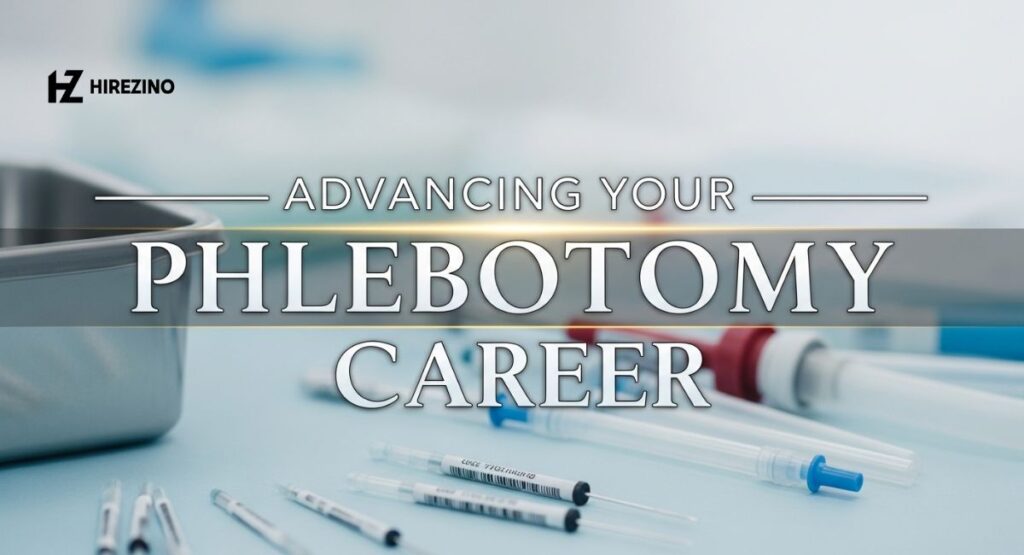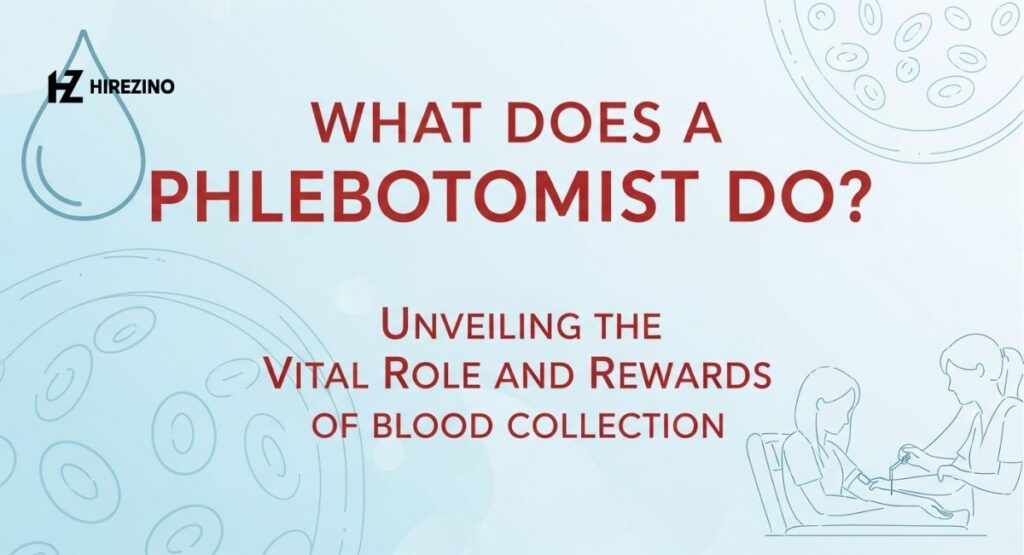What Does A Phlebotomist Do What does a phlebotomist do is question ask by many folks who are seated every time they get to other hospitals and/or laboratories for blood draw. Simply put, a phlebotomist is anyone in the medical field, but even more specifically, it’s a person who draws or “firehoses” blood or venipuncture in a patient and tests the drawn blood for donation purposes. In addition, they’re crucial to the physician when it comes to diagnosing illnesses and determining how successful various treatments seem. However, they’re also necessary in the sense that no one would be able to investigate the type of medical laboratory lunacies we need.Or: Phlebotomists maintain specimens in a safe manner, singing, labeling and transporting them according to established policies.
When trying to comprehend what does a phlebotomist do there is more than just needles and tubes involved. They take care of the patients, give them confidence and collect blood smoothly & safely. They are trained with the aseptic overall handling, including patient identification and cleanliness to avoid any contamination. In essence, what is a phlebotomist does not consist of drawing blood only — it consists of correctly and safely performing the duties for accurate sample collection while providing patient comfort and care in phlebotomy.
What Is a Phlebotomist?
Now if you want to know, what does a phlebotomist do, you begin from the most micro level. A phlebotomist is a specially trained healthcare professional who specialize in blood collection and specimens, venipunctures, finger pricks, and heel pricks. When anyone wants to know, what does a phlebotomist do, they also need to answer that they are responsible for drawing blood specimens safely and the aseptic techniques and safety protocols. A phlebotomist is also responsible for preparing blood collection tubes and making a cup comfortable for blood draw and patient cough. At clinical laboratories and hospitals, accurate screening tests and diagnostic testing for patient care professionals are ensured by all these factors.
Core Responsibilities of a Phlebotomist
People frequently wonder how a phlebotomist spends a typical day on the job.The answer involves many detailed tasks. A clinical phlebotomist verifies patients, checks blood test requisitions, and selects the right blood collection tubes. The next step in what does a phlebotomist do is to perform blood draws using proper blood collection techniques and blood volume measurement methods.
Once the blood specimen is collected, the phlebotomist focuses on specimen labeling and sample labeling protocols. Those learning what does a phlebotomist do should know that correct labeling and specimen transport to the medical laboratory are just as important as the blood draw procedure itself. Every action in the blood collection process supports medical laboratory analysis and patient safety.
Essential Skills for Phlebotomists

If you ask what traits a phlebotomist needs, then of course these depend solely on the individual. Professional phlebotomy skills, steady hands for venipuncture, knowledge of blood collection techniques – a phlebotomist must have all these. So has a part been left out that we haven’t yet touched on What does a phlebotomist do? And that is to ensure patients complete their blood tests in a safe and comfortable environment indeed.
Besides technical skill, what does a phlebotomist do emotionally matters too. They use empathy and patient anxiety management to ease fear during patient interaction. The best answer to what does a phlebotomist do is simple—they combine compassion with precision, making each blood draw procedure a calm and caring experience in any healthcare setting.
Work Environments for Phlebotomists
The You will get different answers depending on where phlebotomists are working. A lot of phlebotomists do this at hospitals, accuweather Laboratories and blood banks–not to mention blood donation stations. In each of these areas, what does a phlebotomist do is at its different. Does work differ than in the other place? Therefore it may be very enriching for a newly graduated phlebologist who changes activities everyday.
There are the additional opportunities of giving blood or doing transfusions however that were not possible in certain other places One phlebotomist may leave employment in their jobat Hospital A and journey to somewhere else Household B to serve patients. Regardless of the setting, but always in phlebotomy it is when it comes to doing no harm that What does a phlebotomist do tends remain true to a common patternThe specifics of the workplace may be different, but the duties of a phlebotomist—reliably collecting, properly labeling, and safely transporting specimens—stay the same.
Educational Pathways to Becoming a Phlebotomist
To learn what does a phlebotomist do, you must also know how to become one. Most people start with a phlebotomy program that teaches phlebotomy education and hands-on phlebotomy technician training. In school, students practice blood collection techniques, learn aseptic techniques, and understand sample labeling protocols. That’s a big part of what does a phlebotomist do in training.
Completing a phlebotomy program helps future professionals prepare for the Certified Phlebotomy Technician exam. Students studying what does a phlebotomist do learn about specimen transport, sanitation procedures, and blood specimen handling. These lessons form the base of a long-lasting healthcare profession.
Certification and Licensing for Phlebotomists
A key part of what does a phlebotomist do involves certification. A phlebotomist certification proves knowledge of medical blood collection and blood collection processes. To qualify, students complete training and pass the Certified Phlebotomist Exam offered by organizations like ASCP or NHA. That’s what what does a phlebotomist do to become a licensed professional.
There are certification levels (LPT, CPT I, CPT II) based on skills and experience. The clinical phlebotomist maintains credentials through continued education. Those serious about what does a phlebotomist do must follow strict healthcare certification rules and keep learning to stay updated on new blood collection techniques and safety protocols.
Salary Expectations for Phlebotomists
Understanding what does a phlebotomist do also means knowing how much they earn. In the U.S., the average salary for a phlebotomist is between $39,000 and $55,000 a year.The income depends on experience, healthcare settings, and certification. For those asking what does a phlebotomist do financially, the field offers solid pay with steady growth.
| Region | Average Salary | Top 10% Earn |
| California | $52,800 | $69,000 |
| Texas | $41,200 | $57,000 |
| Florida | $40,800 | $55,500 |
| New York | $49,500 | $66,200 |
| Illinois | $44,000 | $59,000 |
When we gain more experience and win a goodphlebotomy certification, higher wages are sure to follow; hospitals and clinicallaboratories generally offer high paying jobs than any other settings.
Job Outlook and Career Growth in Phlebotomy
A major reason for the question what does a phlebotomist do is security of employment. The U.S. Bureau of Labor Statistics forecasts a 10% increase in employment by 2032 – more jobs than ever before are waiting
Every blood donation center, emergency room, doctor’s office, and hospital needs phlebotomists. In societies with blood donors set up for economic reasons, people have to care about phlebotomists. The combination of increasing diagnostic technology affect on medical laboratory analysis and the huge amounts of blood donated worldwide mean that both how much work a phlebotomist is to do and who does it will be within human power.
Challenges and Rewards of a Phlebotomist Career
Many people asking what does a phlebotomist do every day will find this hard to believe. Phlebotomists collect blood samples, liaise with patients throughout their visit and have to remain calm even when an adverse reaction takes place after drawing blood: that’s what phlebotomists do. Keeping at it and staying on the job is a big key to what does a phlebotomist do when under pressure.
Still, the rewards are huge. Every time a phlebotomist performs a blood draw procedure, they help in health condition diagnosis and recovery. The best part of what does a phlebotomist do is knowing their work leads to better lives, making this healthcare profession one of the most fulfilling in medicine.
Advancing Your Phlebotomy Career

If you want to move up, what does a phlebotomist do next is seek new opportunities. Some become lab managers, nurses, or teachers. Others expand with phlebotomy certification or specialized phlebotomy education. Continuous learning is a big part of what does a phlebotomist do after gaining experience.
Developing more professional phlebotomy skills opens doors to higher pay and new roles in medical laboratories. Those who love what does a phlebotomist do can stay in this field for years, helping patients while building a lasting healthcare profession that truly matters.
Real-Life Experiences from Phlebotomists
To really see what does a phlebotomist do, listen to their stories. One clinical phlebotomist said, “My favorite part is calming people who are scared.” This shows that what does a phlebotomist do is more about people than needles. Another shared how blood specimen transportation and sample labeling protocols are crucial.
These real experiences reveal what does a phlebotomist do behind the scenes—focus, care, and dedication. Every blood collection process becomes a personal mission.Each blood sample taken ahead of a blood draw means only one thing–the phlebotomist is at your service. It’s an act of charity and compassion.
Conclusion
Exploring what does a phlebotomist do, and we find them among us all. They are committed and loyal workers who, in any blood draw, are keeping up not just with duty but also the pace of life.What does a phlebotomist actually do is clear–take the blood. With skill and heart, these professionals keep such a diverse health care system not only functioning but even improving.
The last word on what does a phlebotomist do is that simple–they meld science with human caring. A phlebotomist shapes fear, meets rigid safety standards, cares for the patient in phlebotomy. And above all else, he communicates trust. Every time they draw a blood specimen, though, they remind us that healing begins at the individual level. Only when one is comforted and free to take full advantage of life’s opportunities can there beuthy for all.'”credited Cotton. New Yorker (1991)
FaQs
What are the 5 duties of a phlebotomist?
The five main duties of a phlebotomist include performing blood draws, labeling blood specimens, preparing samples for diagnostic testing, maintaining sanitation procedures, and ensuring patient comfort during the procedure.
Is a phlebotomist higher than a CNA?
A phlebotomist and a CNA have different roles, but typically, a phlebotomist requires more specialized training and certifications, making them slightly higher in skill level than a CNA.
Is it hard being a phlebotomist?
Being a phlebotomist can be challenging due to the need for precision, managing patient anxiety, and performing tasks like blood draws in various settings, but it is rewarding for those with strong attention to detail.
Do phlebotomists make more money?
Phlebotomists generally make more than entry-level positions like CNAs, but salaries can vary depending on location, experience, and certifications.
How long does it take to become a phlebotomist?
It typically takes 3 to 6 months to complete a phlebotomy program and become certified, depending on the course and training requirements.
Who pays more, phlebotomist or EMT?
In general, EMTs may earn more than phlebotomists, though this can vary depending on factors like location, experience, and the specific job responsibilities.
Who makes more money, phlebotomist or EKG?
EKG technicians may earn a bit more than phlebotomists, depending on factors like job location, certification level, and experience.

